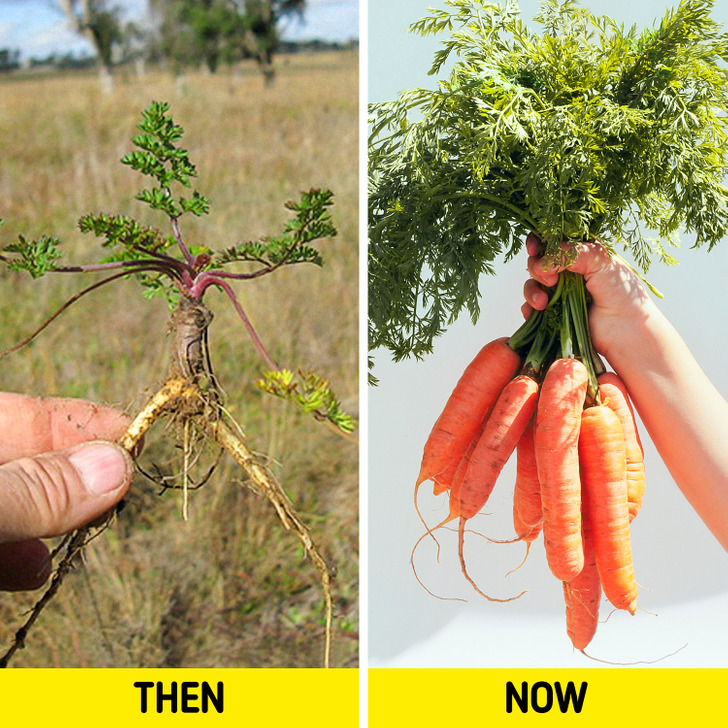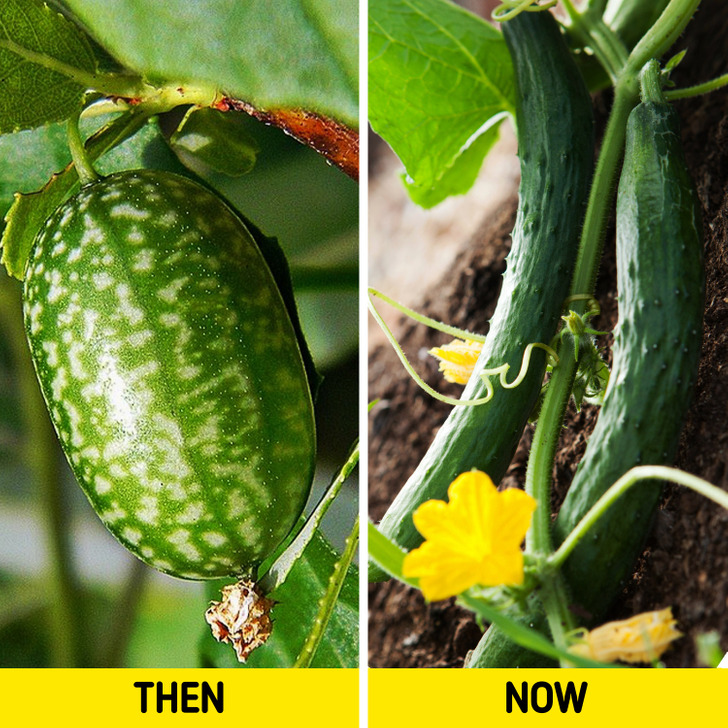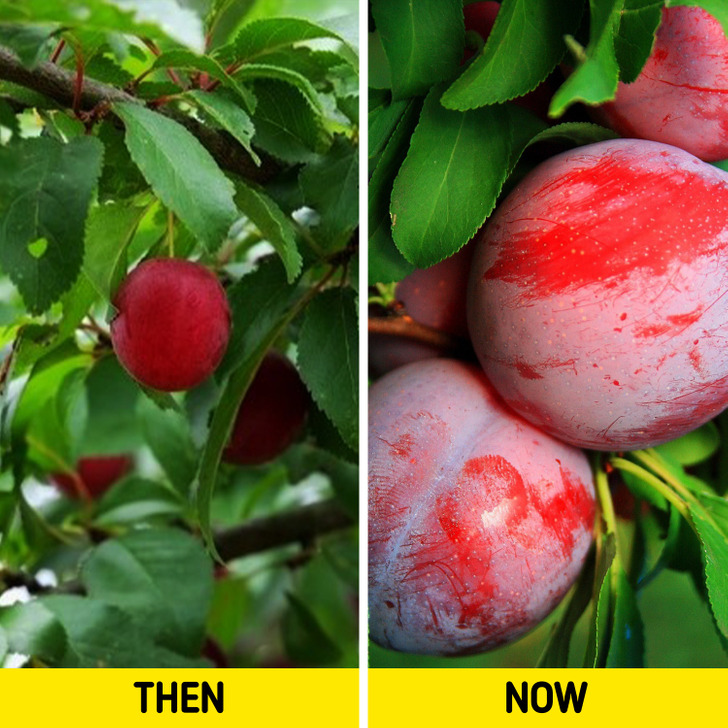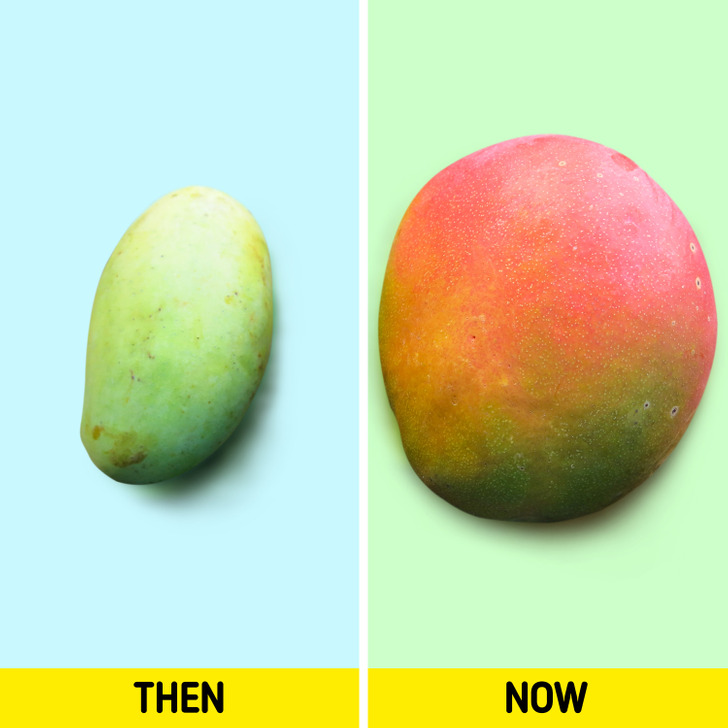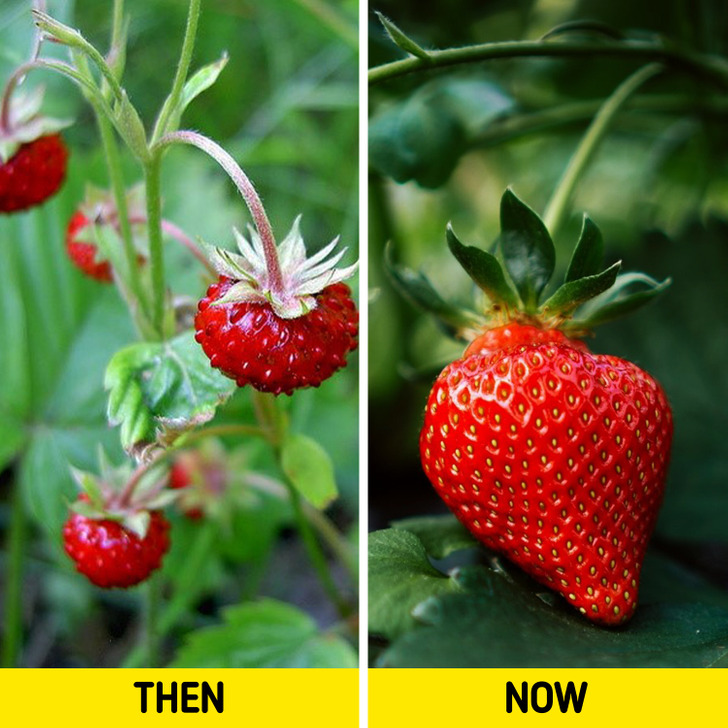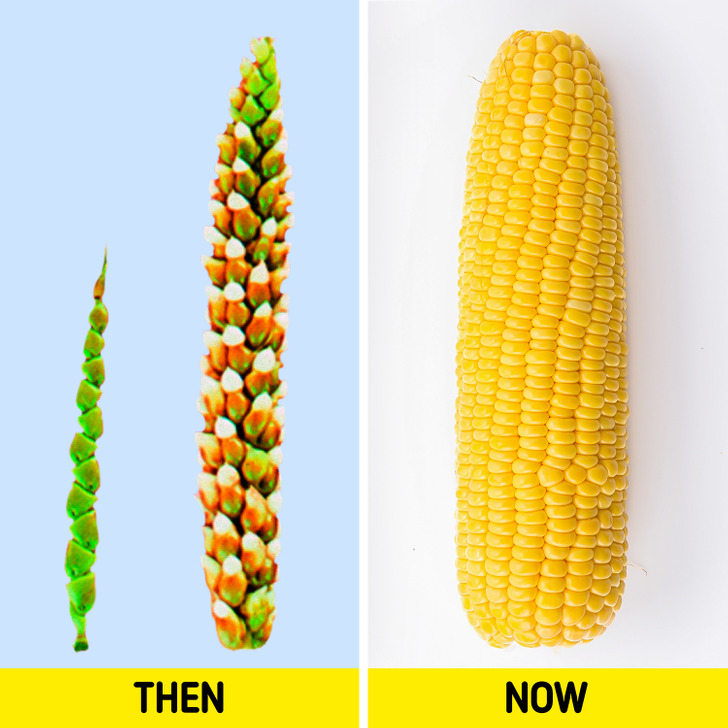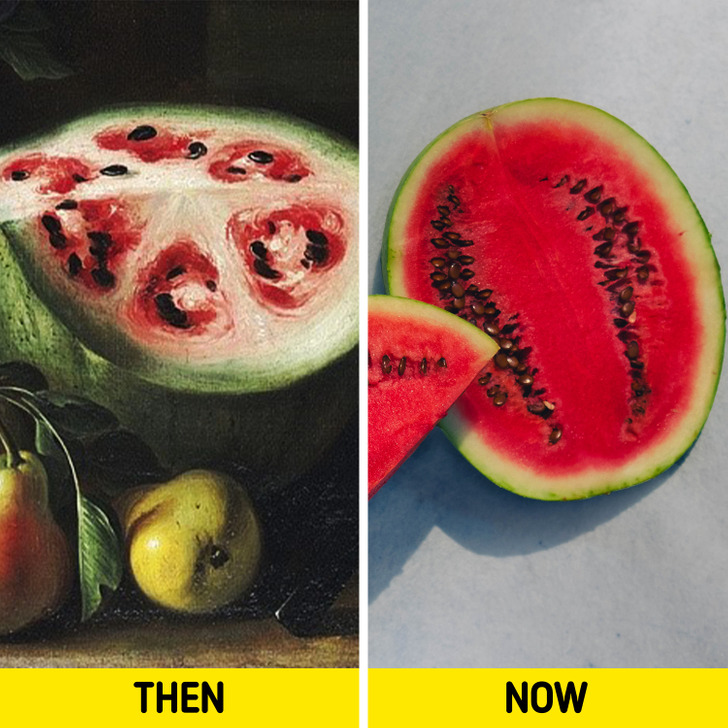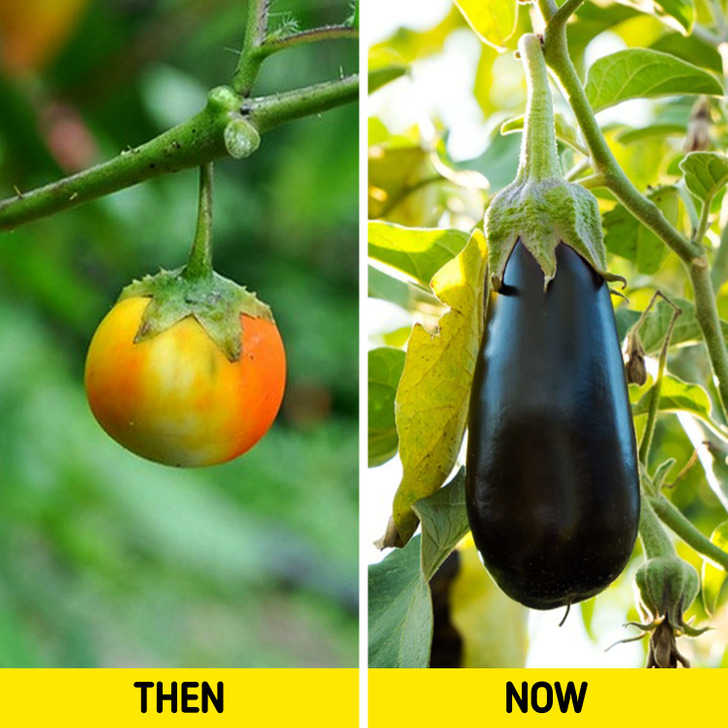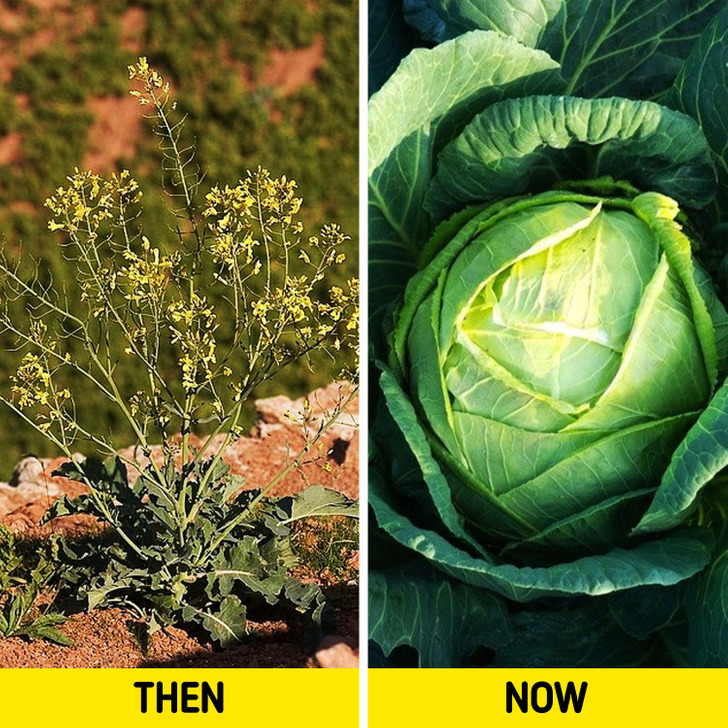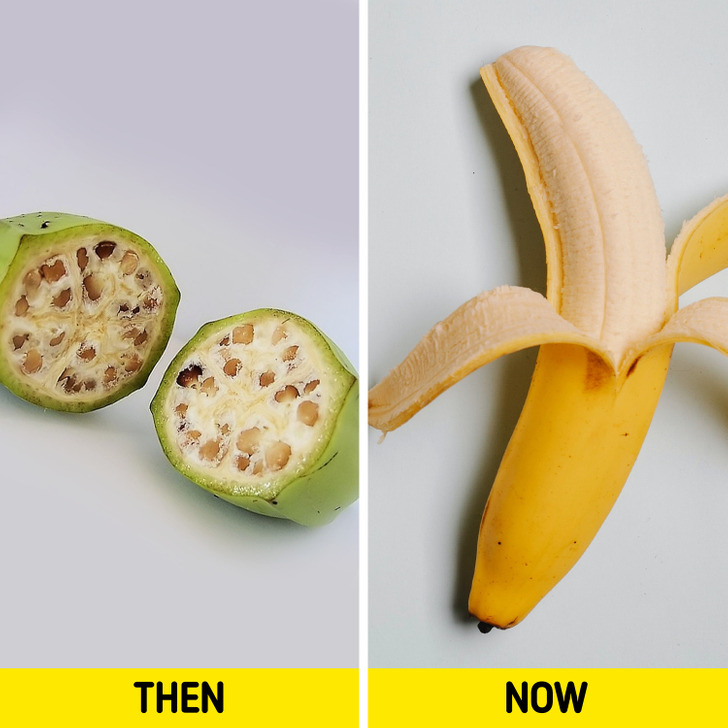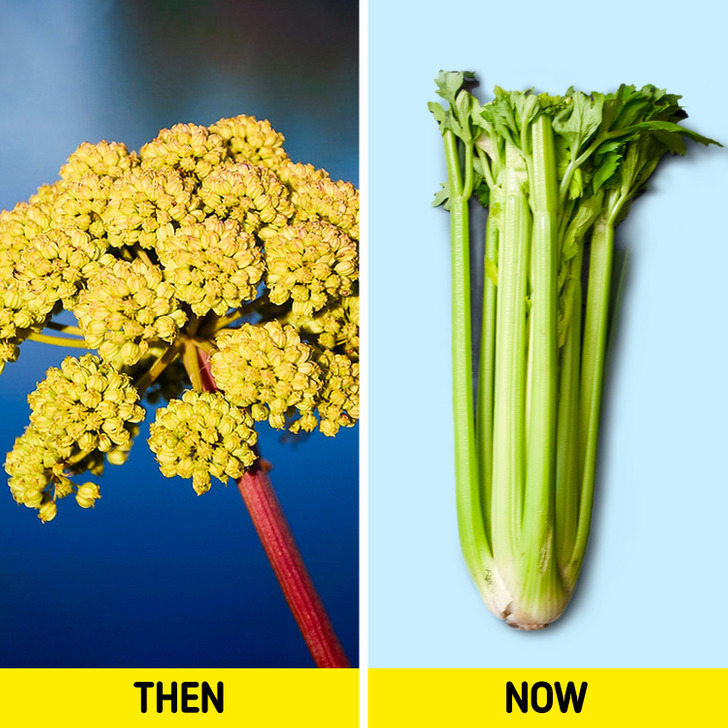11 Fruits and Veggies You May Not Know Humans Changed
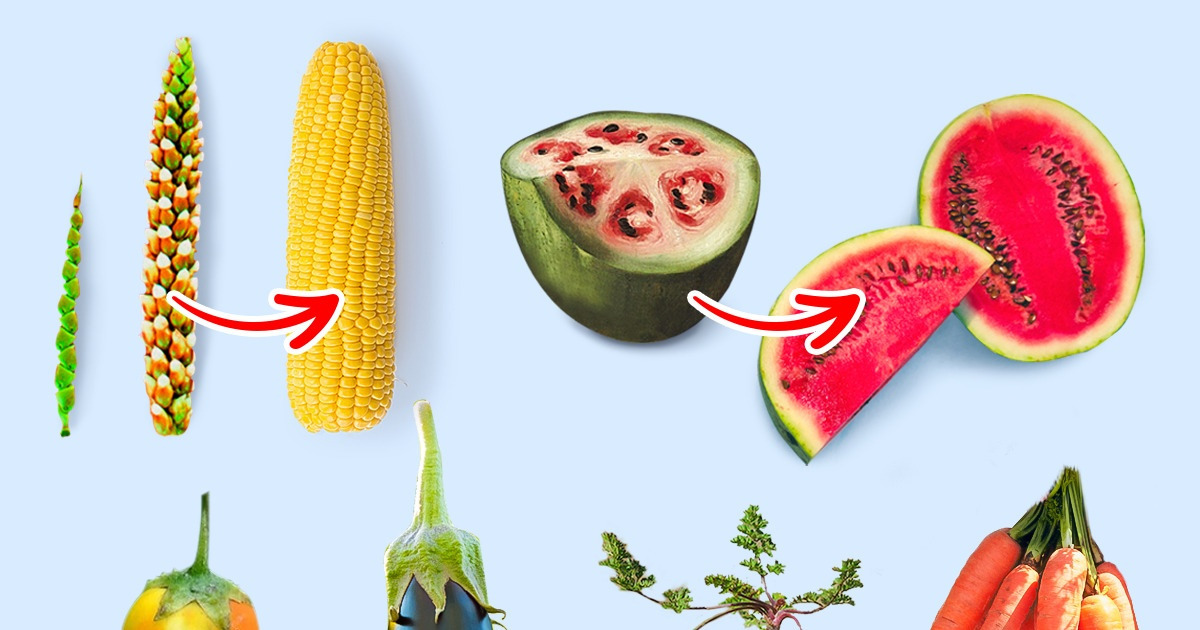
Plenty of nuts, vegetables, and fruits are modified by humans by undergoing a selective breeding process. As such, their taste, looks, and odors aren’t so similar to their originals. 5-Minute Crafts rounded up both the wild and current versions of the most common vegetables and plants for you to learn more about.
1. Carrots
The carrot has come a long way. The first ones were inedible and had a strong flavor in their thin, forked roots. They were originally white or purple, but they’re large, bright orange, and tasty today.
2. Cucumbers
Although cucumbers are generally grouped within vegetables, they are, in fact, fruits. Wild cucumbers originated in India. They were small spiky fruits called Cucumis hystrix. They still exist, and there are various breeds around us, and they keep evolving.
3. Plums
Today, we see plums much bigger than their wild versions, which are tiny like grapes size.
4. Mangoes
With over 1,000 varieties in India, there are hundreds of mango cultivars in today’s world. They differ from each other in terms of color, shape, size, taste, and texture. Just recently, 3 new mango varieties have been developed. In this article, we won’t mention them all, but we’ll give you an example of a wild mango from Cameroon and compare it to one of today’s versions, which is much bigger and more colorful. Please note that there are many other types of wild mangoes, such as the genus Irvingia, African mango (Irvingia gabonensis or bush mango), etc.
5. Strawberries
6. Corn
The first corn appeared like a pinecone and was, in fact, very different from the tasty, elongated, yellow kind that most of us enjoy eating today either barbecued or boiled.
7. Watermelon
When we don’t have data in our hands to refer to, we get help from artwork produced at that time, which is what happened in the case of the watermelon. We see some beautiful fruits on a table in one of Giovanni Stanchi’s still-life paintings made in the 1600s. See how the watermelon appeared to have extra seeds? It’s much different from today’s bright, red, fleshy ones.
8. Eggplant
The early eggplants didn’t have that long skinny, short, fat, globe shape with deep shades of purple that we see today, but instead, they had a round shape and white color, which is where they got their name from.
9. Cabbage
Wild cabbage, or wild mustard, is a biennial plant that produces large leaves in the first year and a large yellow flower in the second year. It’s native to Southern and Western Europe in high salt and lime-tolerant areas.
10. Bananas
The wild banana is also known as Musa acuminata or Musa balbisiana. Most of today’s bananas act as hybrids of these 2 types. While the former has hundreds of large, hard seeds, the latter is also known as the plantain and comes in blue and green skins. Musa balbisiana isn’t usually eaten raw due to its high volume of seeds, but it can be boiled, baked, roasted, or heated.
11. Celery
There are a few different types of plants that are named “wild celery.” Let’s have a look at them:
- Angelica (garden angelica or Angelica archangelica) is a hardy herbaceous plant consisting of long, edible fluted stems and small, broad leaflets with small, white-yellow-greenish flowers and shiny leaves during the June-August flowering season. It groups into several stems, forming clusters.
- Smallage has similar-looking inedible, fibrous stalks with an intense aroma and bitter flavor. While its flowers are greenish white in round clusters, its leaves are green and lobed.
